A Virtual Private Network (VPN) offers effective protection from malware, ad tracking, hackers, spies, and censorship. But that privacy and security will cost you an ongoing subscription.
There are quite a few options out there, two of which are IPVanish and NordVPN. Each of them has varying costs, features, and interfaces. Before making a decision, take the time to consider your options and weigh up which will best suit you in the long term.
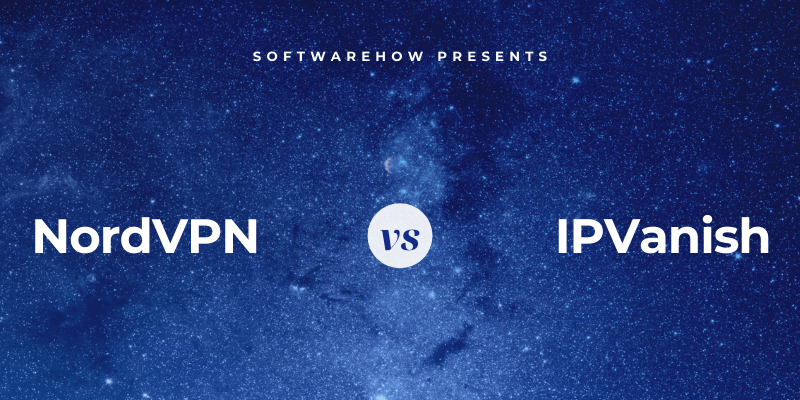
NordVPN (review) offers a wide selection of servers around the world, and the app’s interface is a map of where they are all located. You protect your computer by clicking on the specific location in the world you want to connect to. Nord focuses on functionality over ease of use, and while that adds a little complexity, I still found the app quite straightforward.
IPVanish VPN also offers excellent privacy and security, but in my experience, its servers are slower, and it’s less reliable when accessing streaming content. The Mac app also crashed once during my testing.
Table of Contents
1. Privacy
Many computer users feel increasingly vulnerable when using the internet, and rightly so. Your IP address and system information are sent along with each packet as you connect to websites and send and receive data. That’s not very private and allows your ISP, the websites you visit, advertisers, hackers, and governments can keep a log of your online activity.
A VPN can stop unwanted attention by making you anonymous. It trades your IP address for that of the server you connect to, and that can be anywhere in the world. You effectively hide your identity behind the network and become untraceable. At least in theory.
What’s the problem? Your activity isn’t hidden from your VPN provider. So you need to choose a company you can trust: a provider that cares as much about your privacy as you do.
NordVPN has excellent privacy and “no logs” policies. That means they don’t log the sites you visit at all and only log your connections enough to run their businesses (for example, making sure you’re not using more than the number of devices allowed by your plan). They keep as little personal information about you as possible and allow you to pay by Bitcoin so even your financial transactions won’t lead back to you.
IPVanish is similar. The company collects a little more information at sign-up but keeps no activity or connection logs. Their official website states: “The privacy of our users is our utmost priority.” I assume they do actually keep temporary connection logs like Nord so they can enforce their 10 device limit. You can pay your subscription by credit card or PayPal—Bitcoin and other methods of paying anonymously are not offered.
Winner: Tie. Both services store as little private information about you as possible, and don’t keep logs of your online activity. Both have a large number of servers around the world that help make you anonymous when online.
2. Security
When you use a public wireless network, your connection is insecure. Anyone on the same network can use packet sniffing software to intercept and log the data sent between you and the router. They could also redirect you to fake sites where they can steal your passwords and accounts.
VPNs defend against this type of attack by creating a secure, encrypted tunnel between your computer and the VPN server. The hacker can still log your traffic, but because it’s strongly encrypted, it’s totally useless to them. Both services allow you to choose the security protocol used.
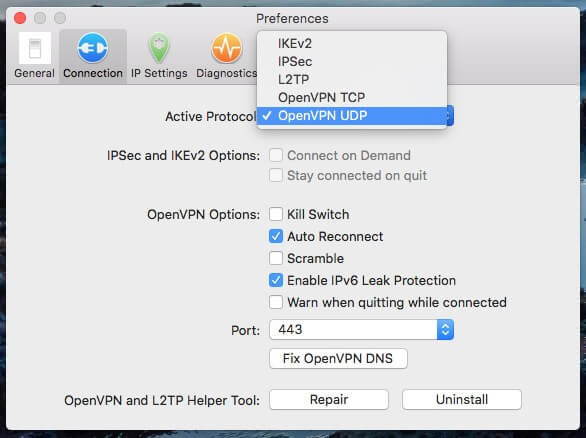
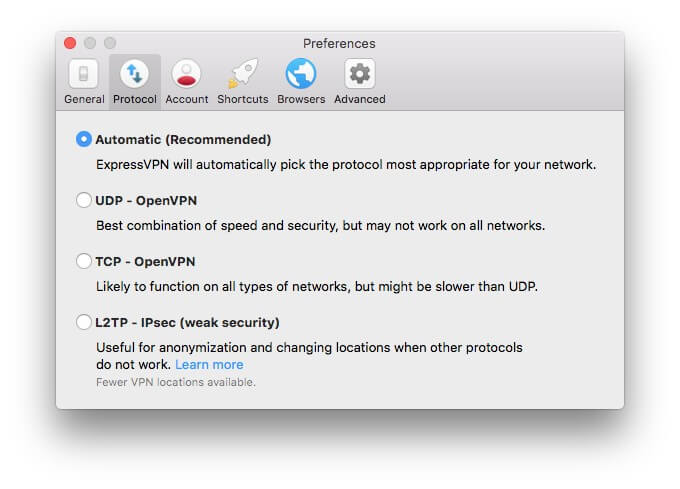
If you unexpectedly become disconnected from your VPN, your traffic is no longer encrypted and is vulnerable. To protect you from this happening, both apps provide a kill switch to block all internet traffic until your VPN is active again.
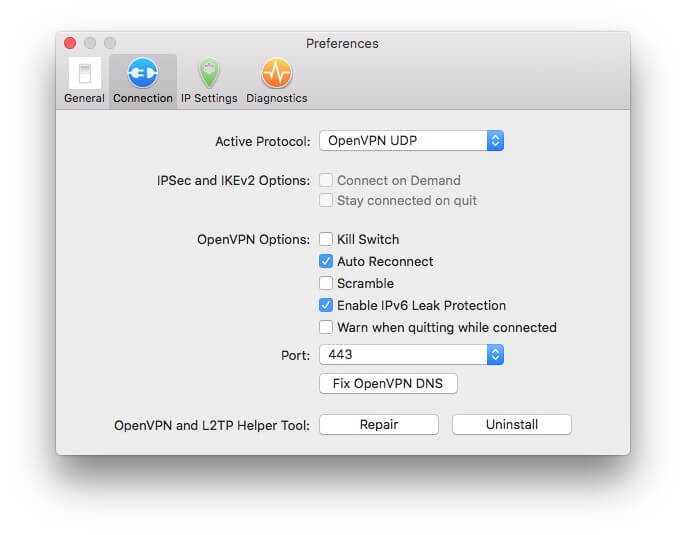
For additional security, Nord offers Double VPN, where your traffic will pass through two servers, getting twice the encryption for double the security. But this comes at an even greater expense of performance.
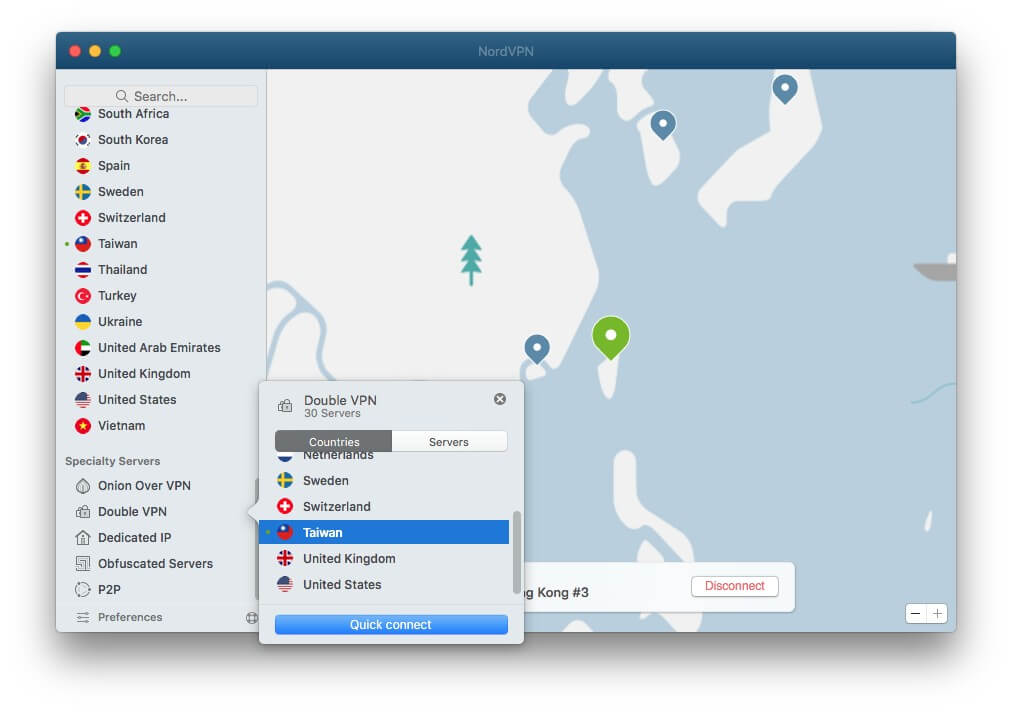
Finally, Nord offers a security feature that IPVanish doesn’t: a malware blocker. CyberSec blocks suspicious websites to protect you from malware, advertisers, and other threats.
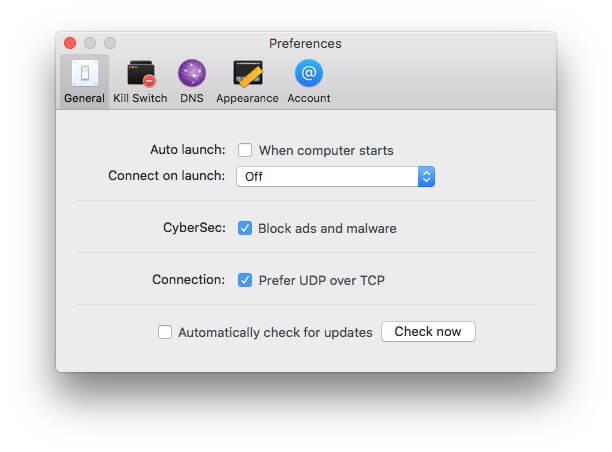
Winner: NordVPN. Either provider offers sufficient security for most users, but if you sometimes require an additional level of security, Nord’s Double VPN is worth considering, and their CyberSec malware blocker is a welcome feature.
3. Streaming Services
Netflix, BBC iPlayer and other streaming services use the geographic location of your IP address to decide which shows you can and can’t watch. Because a VPN can make it appear that you’re in a country you’re not, they now block VPNs as well. Or they try to.
In my experience, VPNs have wildly varying success in successfully streaming from streaming services, and Nord is one of the best. When I tried nine different Nord servers around the world, each one connected to Netflix successfully. It’s the only service I tried that achieved a 100% success rate, though I can’t guarantee you’ll always achieve it.
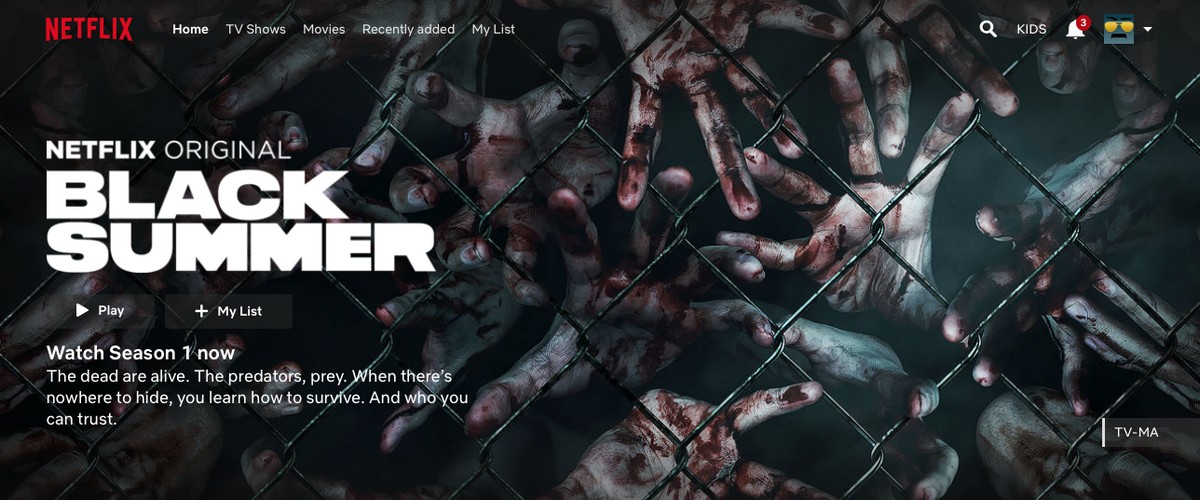
On the other hand, I found it much harder to stream from Netflix using IPVanish. I tried nine servers in total, and only three worked. Netflix somehow worked out that I was using a VPN most of the time, and blocked me. You may have more luck, but based on my experience, I expect you’ll have to work harder with IPVanish than NordVPN.
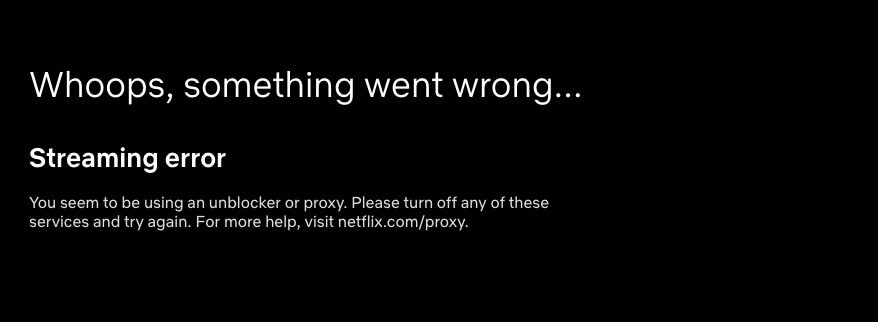
I had a similar experience when streaming from BBC iPlayer. Nord worked every time, while none of IPVanish’s UK servers was successful. Check our best VPN for Netflix review for more details.
Winner: NordVPN.
4. User Interface
Many VPNs offer a simple user interface to make it easy for beginners to get started. The most common is a large switch that turns the VPN on and off. Neither Nord nor IPVanish takes this approach.
NordVPN’s interface is a map of where its servers are located around the world. That’s smart since the service’s abundance of servers is one of its key selling points.
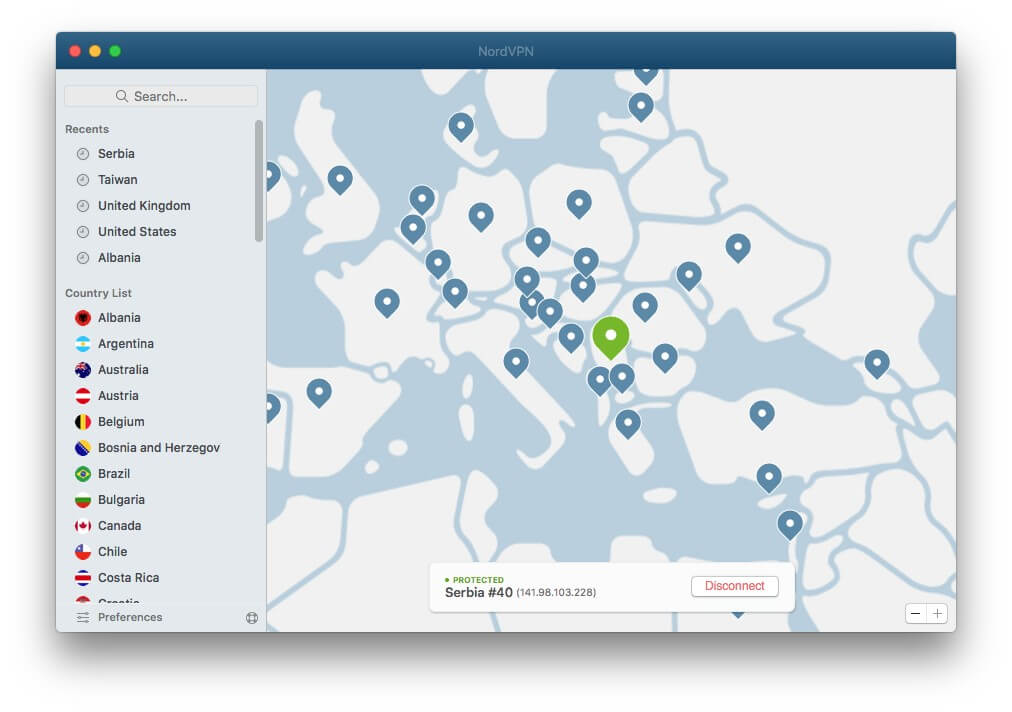
IPVanish’s interface is a little more complex. It displays a graph of your bandwidth (up and down) over time, some statistics, and the server you’re currently connected to.
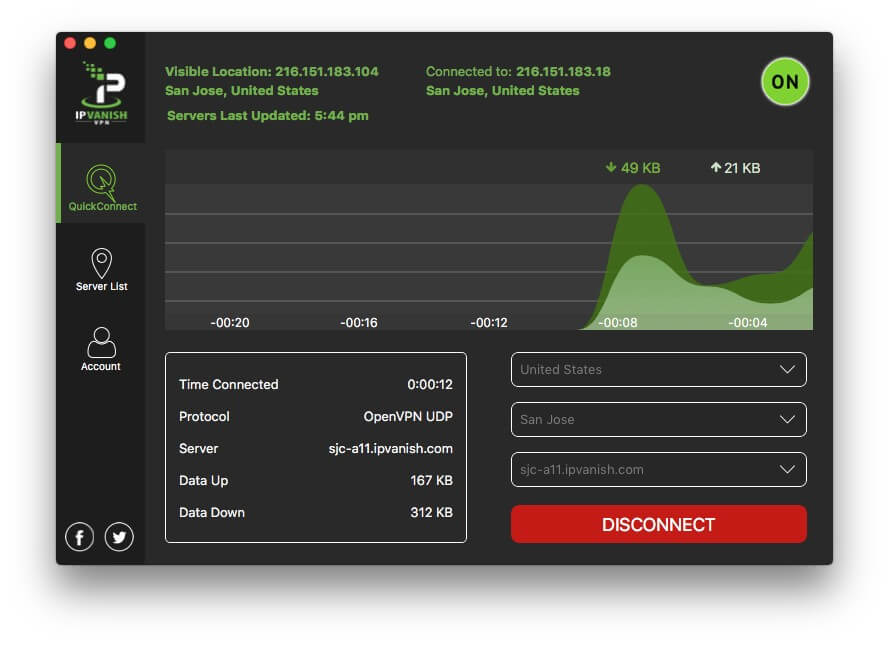
You can see a list of cities that contain servers by clicking on the icon on the left.
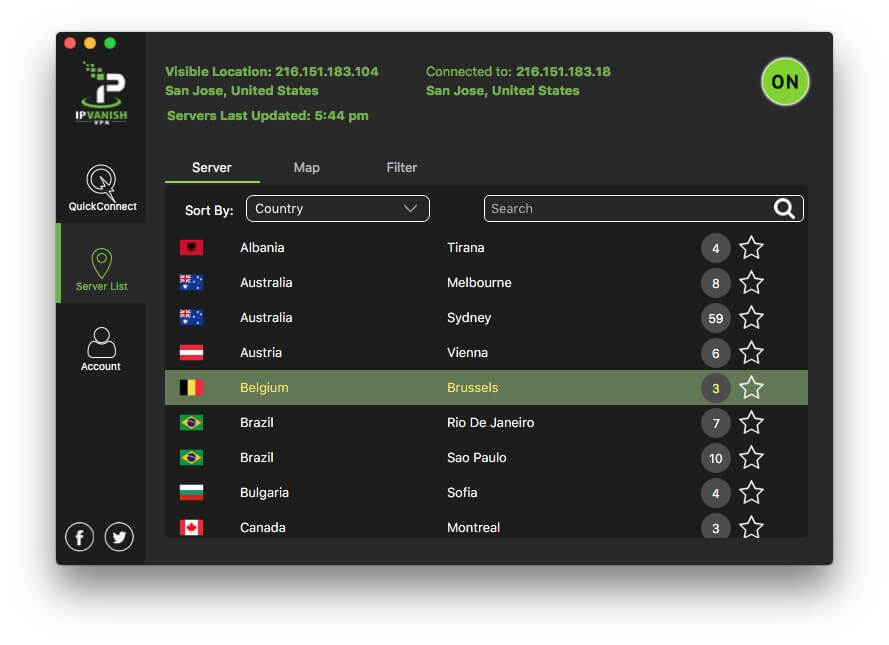
Here we can see that Brussels has three IPVanish servers, and Sydney has 59. I click on the number “59” to see a full list of servers.
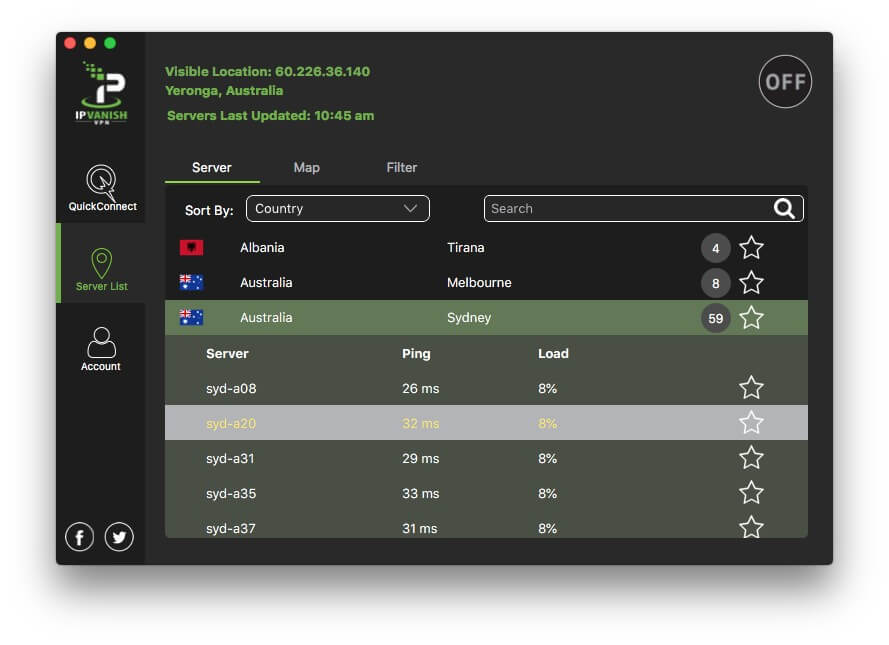
Each server is pinged and the list is sorted in order of speed. I can also see the load on each server, so I can easily select and favorite the fastest. If I just selected “Sydney”, the fastest server would be selected automatically.
Like Nord, IPVanish also offers a map view of its servers.
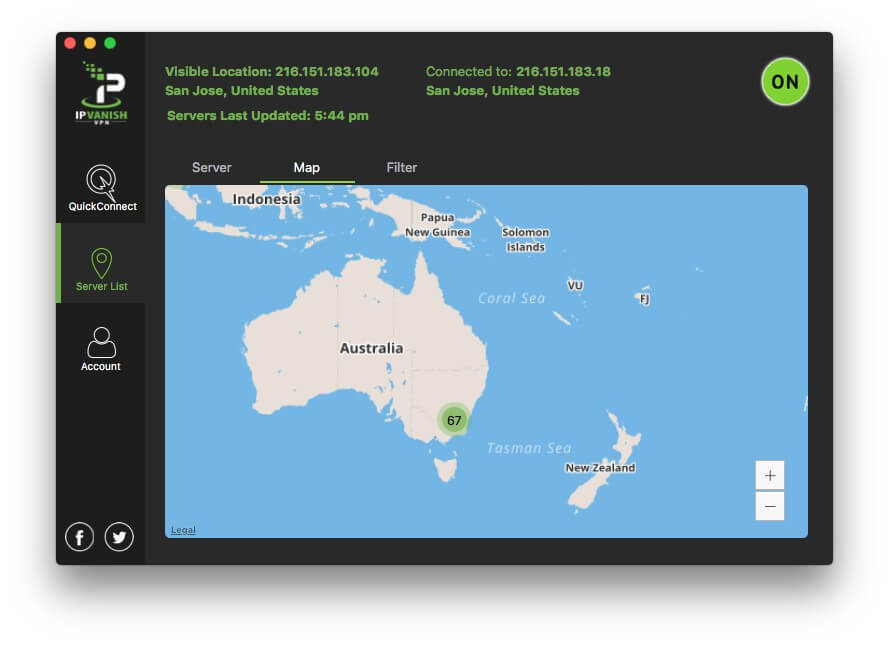
Winner: IPVanish. Neither interface is ideal for beginners, but I didn’t find the apps to be confusing or difficult to use. I enjoy IPVanish’s bandwidth graph, the way it chooses the fastest server in a city by default, and the way it displays the ping and load statistics for each server when you look at a more detailed view. I wish Nord had these features—its app leaves you to find a fast server by trial and error.
5. Performance
But while IPVanish makes it easy to select their fastest servers, I found them to be slower than Nord’s. The fastest Nord server I encountered had a download bandwidth of 70.22 Mbps, only a little below my normal (unprotected) speed. But I found that server speeds did vary considerably, and the average speed was just 22.75 Mbps. So you may have to try a few servers before you find one you’re happy with.
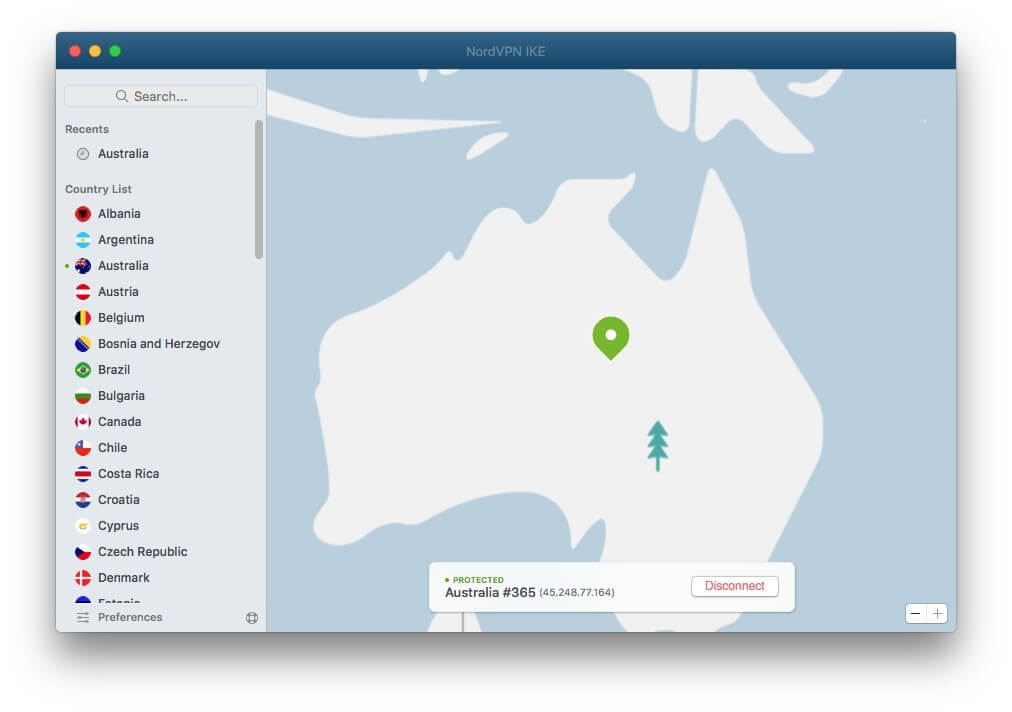
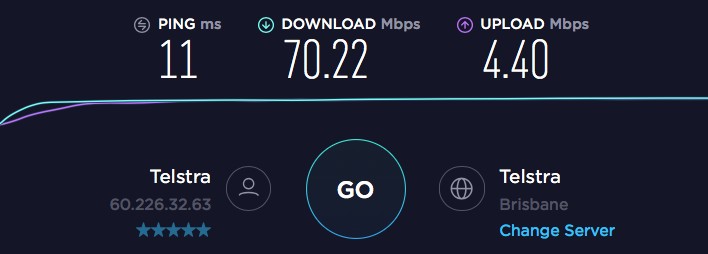
I found IPVanish’s download speeds to be significantly slower. The fastest server I used was able to download at just 34.75 Mbps, and the average of all the servers I tested was just 14.75 Mbps.
Winner: NordVPN’s fastest servers were noticeably faster than IPVanish’s, and the average speed of all servers tested was also faster with Nord.
6. Stability
I never encountered a crash, or even a hiccup, when using NordVPN. But I did have a little trouble with IPVanish.
While using the app, we had a blackout. Once the power was back, I restarted my Mac, and soon afterward was notified that IPVanish crashed. That’s not too serious, but then I noticed I wasn’t able to access the internet on my Mac, while I could on all of my other devices. I tried a few things but to no avail.
Then I restarted IPVanish and was suddenly online again. I thought this may have been because of the app’s kill switch, but when I checked, that feature was disabled. Not only did the app crash, but it blocked my internet. When I exit the app normally, that doesn’t happen.
Winner: NordVPN.
7. Pricing & Value
VPN subscriptions generally have relatively expensive monthly plans, and significant discounts if you pay well in advance. That’s the case with both of these services.
NordVPN is one of the least expensive VPN services you’ll find. A monthly subscription is $11.95, and this is discounted to $6.99 a month if you pay yearly. Nord goes further by rewarding you for paying several years in advance: its 2-year plan costs just $3.99 a month, and its 3-year plan a very affordable $2.99/month.
IPVanish’s plans start a little cheaper, at $10.00/month (currently discounted from $11.99). If you pay a year in advance, that rate comes down to $6.49/month, but that’s significantly more expensive than Nord.
Winner: NordVPN. Unless you pay just a month at a time, you’ll find NordVPN significantly cheaper.
Final Verdict
IPVanish has a lot going for it, but I can’t recommend it. In terms of the privacy and security offered, it is very close to NordVPN. But its slow download speeds and inability to reliably connect to Netflix let it down. Besides this, the Mac app crashed once, and that crash blocked me from accessing the internet.
I recommend NordVPN. If you pay in advance, the service is significantly less expensive, and you’ll get the best Netflix connectivity of any VPN I tested, much faster servers, and additional security options.
If you’re still not sure which to choose, try them both. Both companies stand behind their service with a money-back guarantee (30 days for Nord, 7 days for IPVanish). Evaluate each app, run your speed tests, and try connecting to the streaming services most important to you. See for yourself which one best meets your needs.
